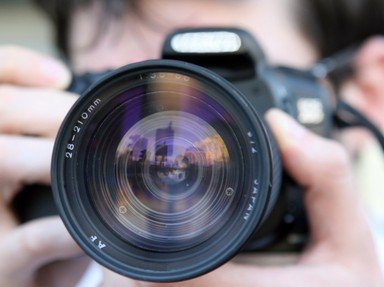Quiz Answer Key and Fun Facts
1. The word 'photography' comes from the Greek 'photos' and 'graphé', which literally means what?
2. The camera is the object by which we get the image onto some kind of recording media but the image needs to be 'in focus' first (in order for us to get a decent picture!). Which part of the camera is used to focus a subject onto the recording media?
3. The opening of a lens is measured as an 'f-number', but what is this opening called?
4. Another function of cameras is the shutter speed, which can be adjusted on some cameras. If I decreased the shutter speed on my camera (without reducing the aperture), which of the following would I most likely want to take a clear ('correctly' exposed) photo of?
5. Several industries use watermarks on their photos to distinguish their work from others and enforce copyrights. Yet some digital cameras use a digital checksum (similar to the way humans have fingerprints) to ensure that any tampering with the digital file can be identified. In which field would this digital checksum (or digital signature or fingerprint) be the most important? (Hint: you shouldn't need the team from CSI to help you figure out the answer to this one!)
6. Most people would know that it's not a good idea to look directly at the sun - either with the naked eye or through a camera. There is one type of camera though that is used for Solargraphy (among other things) that allows you to look at an image of the sun in a safe way. What type of camera can you use to look at the sun and not risk burning your retinas?
7. In the early 21st century a new kind of camera was introduced which made photography quick, easy and immediately 'share-able' for most people who owned one of these devices. What was this amazing device?
8. There are many different types of photography but one that interests me, personally, is 'aerial photography'. But what is aerial photography?
9. Black-and-white photography falls under the banner of this type of photography, as does any type of photography using a single colour hue. What is this type of photography called?
10. One thing that has fallen by the wayside with the advent of digital cameras is film processing. The photo processing industry was the biggest worldwide user of which non-renewable resource?
Source: Author
lones78
This quiz was reviewed by FunTrivia editor
WesleyCrusher before going online.
Any errors found in FunTrivia content are routinely corrected through our feedback system.


